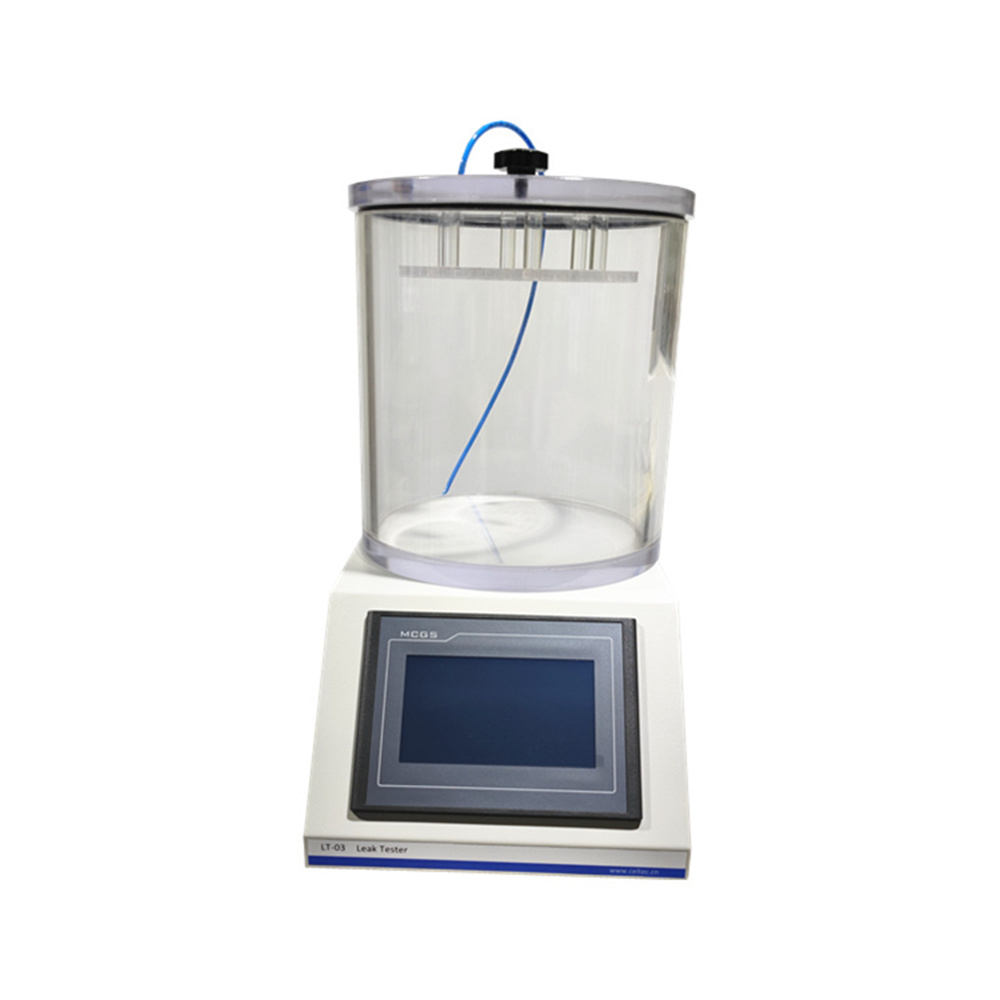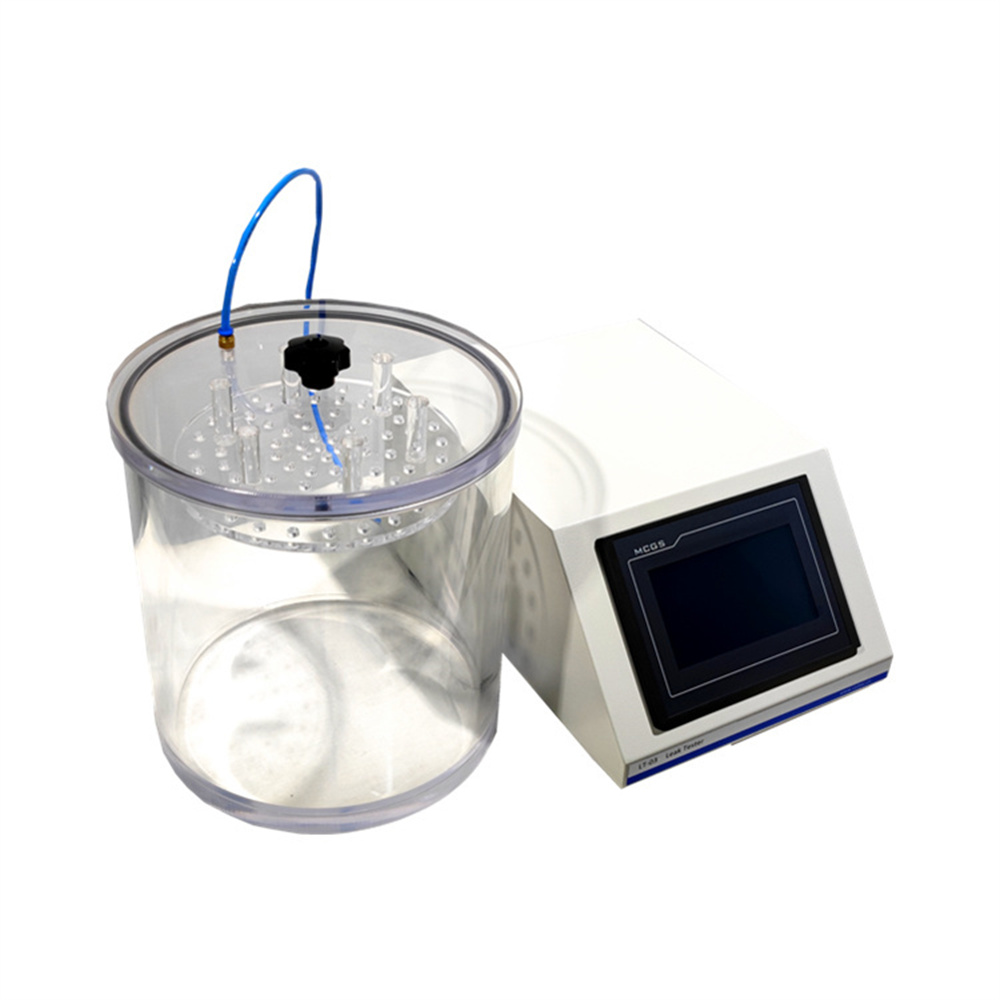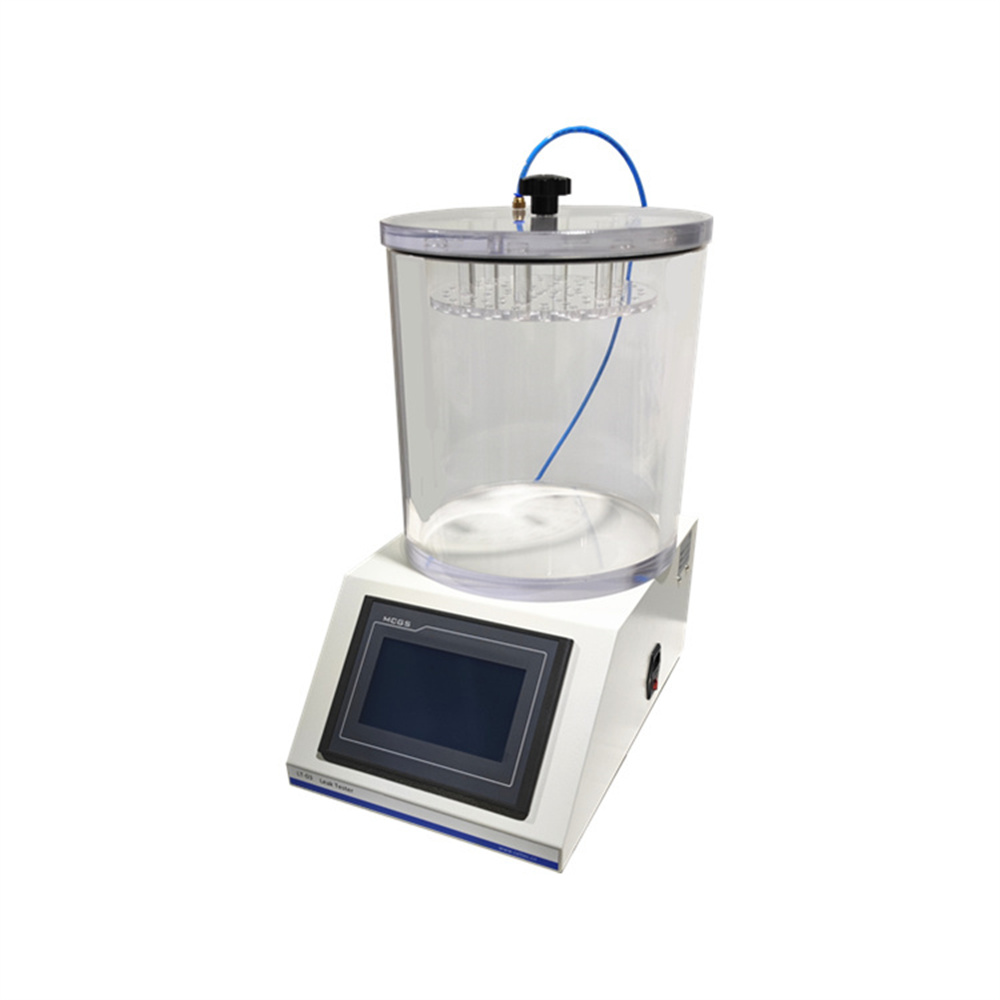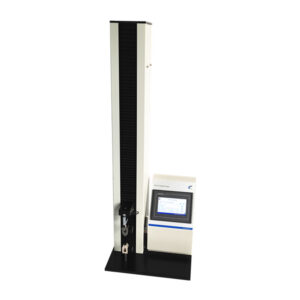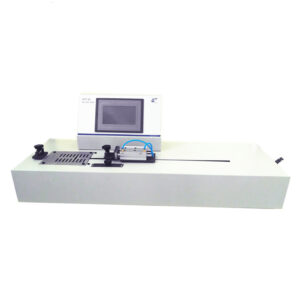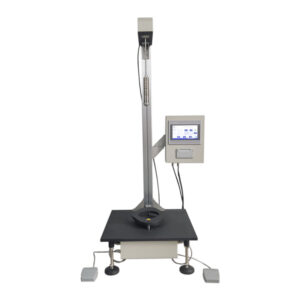Einführung
In der Verpackungsindustrie ist die Aufrechterhaltung der Integrität von Siegeln entscheidend für die Gewährleistung von Produktsicherheit und -qualität. Geräte zur Prüfung der Siegelfestigkeit dienen dazu, die Fähigkeit des Siegels zu bewerten, Umweltbedingungen standzuhalten und Lecks und Verunreinigungen zu verhindern. Diese Prüfung ist für Branchen wie Lebensmittelverpackung, Pharmazeutika, medizinische Geräte, Kosmetik und viele andere von entscheidender Bedeutung, in denen die Verpackungsleistung direkte Auswirkungen auf die Produktqualität und Verbrauchersicherheit hat.
Zellinstrumente Prüfgerät für Siegelfestigkeit bietet eine präzise, zuverlässige Methode zur Beurteilung der Siegelintegrität und gewährleistet, dass verpackte Produkte sicher und geschützt bleiben und den Industriestandards entsprechen.
Was ist ein Gerät zur Prüfung der Siegelfestigkeit?
Geräte zur Prüfung der Siegelfestigkeit werden verwendet, um die Festigkeit und Zuverlässigkeit von Siegeln in Verpackungsmaterialien zu beurteilen. Die Geräte prüfen, ob die Siegel verschiedener Verpackungsarten (Kunststoff, Papier, Aluminium usw.) stark genug sind, um Lecks zu verhindern, die das Produkt beeinträchtigen könnten. Dieser Test wird häufig für Verpackungsmaterialien in den Bereichen Lebensmittel, Arzneimittel, medizinische Geräte und Konsumgüter verwendet.
Durch den Einsatz modernster Testtechnologie trägt der Siegelfestigkeitstester dazu bei, schwache oder fehlerhafte Siegel zu identifizieren, bevor sie den Verbraucher erreichen. So wird eine hohe Produktqualität und die Einhaltung von Sicherheitsstandards sichergestellt.
Übersicht über ASTM D3078: Prüfnormen für Siegelintegrität
Was ist ASTM D3078?
ASTM D3078 ist eine von ASTM International entwickelte Standardtestmethode zum Erkennen von Lecks in versiegelten Verpackungen. Bei dieser Methode wird ein Vakuum an die Verpackung angelegt und auf das Vorhandensein von Blasen überwacht, die auf Lecks hinweisen, wodurch die Integrität der Versiegelung sichergestellt wird. Der Test ist besonders wichtig für die Lebensmittel- und Pharmaindustrie, wo die Verpackung ihre Integrität bewahren muss, um Verunreinigungen oder Verderb zu verhindern.
Prüfverfahren nach ASTM D3078
Der ASTM D3078 Der Standard beschreibt einen Prozess, bei dem die Verpackung in eine mit Wasser gefüllte Kammer gelegt wird. Die Kammer wird versiegelt und die Luft wird abgesaugt, bis das voreingestellte Vakuumniveau erreicht ist. Wenn ein Leck vorhanden ist, zwingt der Luftdruckunterschied die eingeschlossene Luft zum Entweichen, wodurch an der Leckstelle sichtbare Blasen entstehen. Mit dieser Methode lassen sich selbst kleinste Lecks effektiv und zuverlässig erkennen.
Wichtige Testmethoden und Parameter
Testprozess
Der Prüfvorgang für die Siegelfestigkeit folgt einem einfachen Ablauf, der in ASTM D3078 beschrieben ist:
- Probenvorbereitung: Das Probenpaket wird in eine transparente, mit Wasser gefüllte Kammer gelegt.
- Vakuumanwendung: Die Steuereinheit saugt Luft ab, bis ein voreingestelltes Vakuumniveau erreicht ist.
- Lecksuche: Wenn die Versiegelung beschädigt ist, bilden sich an der undichten Stelle Blasen, die auf einen Defekt der Verpackung hinweisen.
Wichtigste Testparameter
| Testbereich | 0 bis -90 KPa |
| Kammer | Acryl-Zylinderform |
| Testraum | Φ270*H210mm (Innen nutzbar) |
| Druckluft | 0,7 MPa (vom Benutzer vorbereitet) |
| Leistung | 110~220V 50/60Hz |
Diese Parameter ermöglichen dem Benutzer das Testen unterschiedlicher Verpackungsmaterialien und -größen und gewährleisten so Flexibilität in unterschiedlichen Produktions- und Testumgebungen.
Technische Merkmale der Prüfgeräte für Siegelfestigkeit
SPS-gesteuerter Betrieb
Die Steuerung der Geräte erfolgt über eine SPS (speicherprogrammierbare Steuerung), die stabile, wiederholbare und qualitativ hochwertige Testergebnisse gewährleistet. Die Benutzeroberfläche ist mit einem HMI-Touchscreen (Human-Machine Interface) ausgestattet, der eine intuitive Steuerung und einfache Bedienung ermöglicht.
Effizientes Vakuumsystem
Die Prüfeinheit verwendet eine Venturirohr um ein Vakuum von bis zu -90 KPa zu erzeugen, was es zu einem energieeffizienten System macht. Dieses Vakuumniveau reicht aus, um Lecks zu identifizieren, selbst wenn sie sehr klein sind, und gewährleistet eine qualitativ hochwertige Prüfung ohne zusätzliche Ausrüstung.
Visuelle Lecksuche
Der Test verwendet eine visuelle Beobachtungsmethode zur Leckerkennung. Wenn ein Leck vorhanden ist, bildet aus der Verpackung entweichende Luft sichtbare Blasen in der mit Wasser gefüllten Kammer, was eine schnelle Identifizierung ermöglicht. Das Gerät liefert kumulative Ergebnisse, sodass mehrere Tests und ihre Wirksamkeit im Laufe der Zeit leicht beurteilt werden können.
Parameterspeicherfunktion
Um die Testeffizienz zu optimieren, Siegelfestigkeitsprüfgerät enthält eine Parameterspeicherfunktion für bis zu 5 verschiedene Testaufbauten. Damit können Benutzer bestimmte Parameter wie Vakuumniveaus und Testzeiten speichern, was den Wechsel zwischen verschiedenen Probentypen und Testbedingungen erleichtert.
Anpassbare Kammer und optionale Funktionen
Die Prüfkammer besteht aus hochwertigem transparentem Acryl und ermöglicht eine klare Beobachtung des Prüfvorgangs. Für die Prüfung einer Vielzahl von Verpackungsformaten sind benutzerdefinierte Kammergrößen und -formen erhältlich. Das Gerät bietet außerdem optionale Funktionen wie:
- Mikrodrucker zur Probenidentifizierung und Dokumentation der Testergebnisse.
- Sprachanpassung für internationale Märkte, um sicherzustellen, dass der Tester für Benutzer in verschiedenen Regionen zugänglich ist.
- Integration einer Vakuumpumpe um höhere Vakuumniveaus für anspruchsvollere Testszenarien zu ermöglichen.
Vorteile von Geräten zur Prüfung der Siegelfestigkeit
Qualitätssicherung
Die Prüfung der Siegelfestigkeit ist entscheidend, um sicherzustellen, dass die Verpackung Umweltbelastungen standhält und den Inhalt vor Beschädigung, Verunreinigung oder Verderb schützt. Diese Prüfung ist für die Lebensmittel-, Medizin- und Pharmaindustrie von entscheidender Bedeutung, da hier die Sicherheit und Integrität des Produkts von größter Bedeutung sind.
Anpassung
Die Ausrüstung kann verschiedene Verpackungsarten verarbeiten, von kleinen Beuteln bis hin zu großen Behältern, und bietet Flexibilität für eine Vielzahl von Branchen. Durch die Möglichkeit, Testparameter für verschiedene Materialien zu speichern, ist die Ausrüstung an mehrere Testszenarien anpassbar.
Kostengünstig und effizient
Mit seiner benutzerfreundlichen Oberfläche, automatisierten Funktionen und anpassbaren Einstellungen ist das Prüfgerät für Siegelfestigkeit ermöglicht Unternehmen, Tests effizient durchzuführen, ohne Kompromisse bei der Genauigkeit einzugehen. Die Möglichkeit, Testaufbauten zu speichern und kumulative Ergebnisse zu generieren, optimiert den Arbeitsablauf und reduziert Testzeit und -kosten.
Relevante Standards: ASTM D3078 und darüber hinaus
ASTM D3078
Diese Standardmethode wird häufig in Branchen eingesetzt, in denen die Integrität der Verpackungssiegel von entscheidender Bedeutung ist. Sie stellt sicher, dass die Verpackung die erforderlichen Leistungsstandards erfüllt, um Lecks zu verhindern und den Inhalt vor äußerer Verunreinigung zu schützen.
ASTM D4991
ASTM D4991 ist ein weiterer verwandter Standard, der sich auf die Dichtheitsprüfung versiegelter Verpackungen mit einer anderen Methode (Farbpenetration oder Druckabfall) konzentriert. Dieser Standard wird auch zusammen mit ASTM D3078 für umfassende Dichtheitsprüfungen von Verpackungen verwendet.
Warum sollten Sie sich für die Prüfgeräte zur Siegelfestigkeit von Cell Instruments entscheiden?
Cell Instruments ist ein vertrauenswürdiger Name in der Materialprüfbranche. Mit jahrelanger Erfahrung in der Prüfung von Verpackungsmaterialien und kundenspezifischen Prüflösungen bieten wir hochpräzise Geräte, die den hohen Anforderungen verschiedener Branchen gerecht werden. Unsere Prüfgerät für Siegelfestigkeit wurde entwickelt, um zuverlässige, genaue und effiziente Ergebnisse zu liefern und Unternehmen dabei zu helfen, die Unversehrtheit ihrer Verpackungen zu gewährleisten.
Mit der Flexibilität, unterschiedliche Verpackungsmaterialien zu testen und der Fähigkeit, mehrere Testaufbauten zu speichern, sind unsere Geräte darauf ausgelegt, Ihren Testprozess zu optimieren und Ihre Qualitätskontrolle zu verbessern.
Die Gewährleistung der Integrität der Verpackungssiegel ist für die Aufrechterhaltung der Produktsicherheit, -qualität und Einhaltung von Industriestandards von entscheidender Bedeutung. Prüfgerät für Siegelfestigkeit bietet eine effiziente, zuverlässige und anpassbare Lösung für Unternehmen, die eine hochpräzise Lecksuche benötigen. Egal, ob Sie Lebensmittelverpackungen, Dichtungen für medizinische Geräte oder pharmazeutische Behälter testen, unsere Geräte bieten die Genauigkeit und Konsistenz, die Sie benötigen, um sicherzustellen, dass Ihre Produkte in höchster Qualität auf den Markt kommen.
FAQ-Bereich
- Was ist der ASTM D3078-Standard für Dichtungsintegritätsprüfungen?
- ASTM D3078 ist eine Standardtestmethode zum Erkennen von Lecks in versiegelten Verpackungen mittels Vakuumanwendung. Sie stellt sicher, dass die Verpackung ihre Integrität behält, indem sie schwache Siegel identifiziert, die zu Verunreinigungen oder Verderb führen könnten.
- Wie funktioniert ein Gerät zur Prüfung der Siegelfestigkeit?
- Das Gerät legt die Probe in eine mit Wasser gefüllte Kammer, wendet ein Vakuum an und erkennt Lecks, indem es die Bildung von Blasen in der Kammer beobachtet, wenn die Versiegelung beschädigt ist.
- Welche Branchen nutzen Siegelfestigkeitsprüfungen?
- Die Prüfung der Siegelfestigkeit ist in Branchen wie der Lebensmittelverpackung, der Pharmazie, der Medizintechnik, der Kosmetika und der Konsumgüterindustrie von entscheidender Bedeutung, in denen die Siegelintegrität für die Produktsicherheit von entscheidender Bedeutung ist.
- Kann ich mit diesem Gerät unterschiedliche Verpackungsmaterialien prüfen?
- Ja, das Gerät ist vielseitig und kann eine Vielzahl von Verpackungsmaterialien, einschließlich Kunststoff, Papier und Aluminium, mit anpassbaren Kammergrößen und Vakuumniveaus testen.
- Welche Hauptvorteile bietet die Verwendung der Siegelfestigkeitsprüfgeräte von Cell Instruments?
- Zu den wichtigsten Vorteilen zählen hohe Genauigkeit, anpassbare Funktionen, einfache Bedienung mit einer intuitiven HMI-Schnittstelle und die Möglichkeit, Testparameter für verschiedene Verpackungsarten zu speichern.

